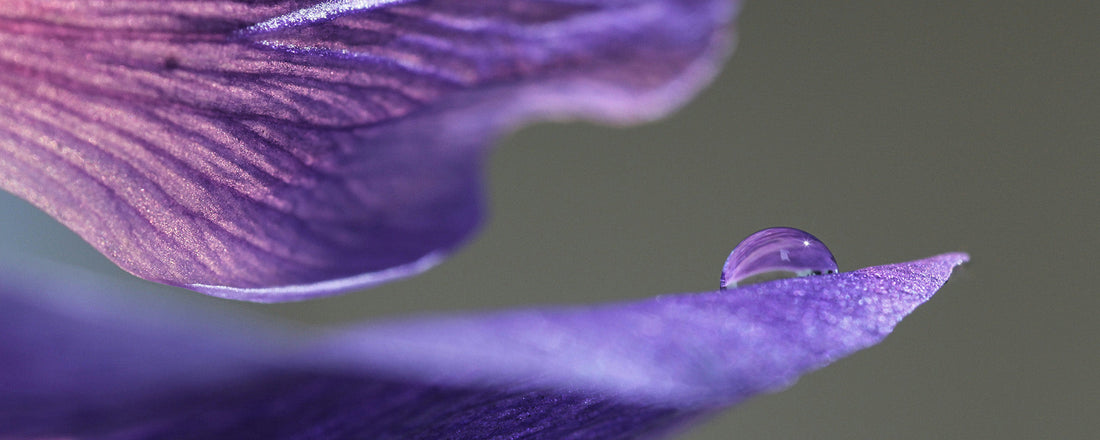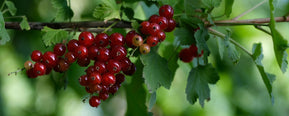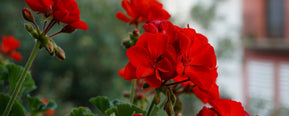What Does Violet Smell Like? A Deep Dive into Its Aroma
This question invites exploration into one of perfumery's most alchemical fragrances, derived from the scented Viola odorata flower.
Violet is a milky, powdery fragrance that has been bewitching perfume wearers for centuries, from natural essences to precise synthetic recreations.
In this article, we will learn about violet's perfumery behavior, history, and application in creating multi-layered scent compositions at Buchart Colbert Indie Perfume House.
From their origins to their pairings, violet's history demonstrates its long-standing popularity with niche perfumes.
What Does Violet Smell Like?
Violet captivates with its delicate, multi-faceted aromatic scent that possesses harmony within the balance of subtlety and depth.
Often described as soft and powdery, it carries a whisper of green freshness reminiscent of dew-kissed petals in early spring. The note develops with sweetness, reminiscent of the fresh purity of the flower without overwhelming the senses.
In perfumery, violet brings refinement, where it combines well with other ingredients to make enchanting scent symphonies.
- Soft and Powdery: evoking crushed petals, spent cosmetic packets, and antique beauty
- Green and Floral: reminding us of spring meadows and green leaves at your feet
- Evokes Moods: elegance in complex blends, melancholy in contemplative perfumes.
Perfumers love violet as it is a heart note; it stays to complete the story of a fragrance.
It is ideal to use violet as a blending component to underpin other florals and provide emotional depth without overpowering the formula.
The Origin of Violet in Perfumery
Violet has been used in fragrance for centuries, derived primarily from the Viola odorata plant.
Previously, violets were consumed for medicinal and symbolic uses, believed to soothe and calm.
By the Victorian era, violet perfumes became a fashionable expression of romantic restraint, linking the flower forever with themes of nostalgia and elegance.
However, the true violet flower is almost silent in perfumery because it yields very little essential oil.
Instead, perfumers bottle its essence with aroma molecules like ionones, discovered in the late 19th century. These chemical imitations enable the world of perfumes to seize violet's powdery-floral quality to bring stability and depth into scents.
Botanical & Cultural Context
Violets bloom early in spring, often one of the first flowers to indicate seasonal renewal. They are symbolically charged with modesty, memory, and frailty of beauty.
In European culture, they were associated with mourning ceremonies, whereas in poetry and music, they were used metaphorically to represent vulnerability and fleeting youth.
Their cultural resonance makes violet not merely a floral note but a literary and artistic motif woven into fragrance traditions.
Extracting the Violet Note
True violet flower oil practically does not exist since it is not very productive.
Perfumers substitute the violet leaf absolute, which contains a green, grassy note for the floral sweetness of the flowers.
Synthetic molecules alpha-ionone and beta-ionone are employed to produce violet floral notes. They precisely imitate the powdery, soft signature of violet, allowing perfumers to introduce violet into perfumes with precision and artistry.
What are the Best Scents to Pair with Violet?
Violet is highly adaptable and suitable for classic and contemporary compositions. Perfumers prefer to use it as a transition note, balancing other flowers or moderating sweetness with green sophistication.
- Iris and Rose: The florals add vintage powderiness to violet, creating soft floral elegance recalling classic perfumes.
- Musk: This base softens violet's edges, offering a drydown extension for a warm, comforting finish.
- Cedarwood or Vetiver: Dryness, green woods cutting through violet sweetness, lending earthy depth and structure.
- Layering Tip: Mixing violet with aldehydic or amber-scented fragrances for complexity and longevity.
In niche perfumery, violet is often employed to create tension between softness and elegance, so it is a focal note of new scent symphonies.
How to Experience Violet in Perfume
It begins in a green, powdery veil, later unfolding as a light floral accord, sometimes edged with sweetness.
With rose, iris, or musk, violet has vintage elegance, evoking early 20th-century scents.
Violet is particularly effective in cooler months or for evening wear, where its intimacy and sophistication are best appreciated.
Its sillage is generally intimate, laying down a reminiscing, refined trail of discovery rather than proclamation.
Common Misconceptions about Violet Scent
The beauty of violet in perfumery is usually misinterpreted, as its subtle profile can be confused with similar notes.
Misconception 1: Violet Smells the Same as Iris/Orris
Many assume that violet and iris/orris have identical profiles because both hold powdery characteristics, but there are distinct differences.
- Violet provides a sweeter, flowerier, and more ethereal fragrance evoking the scent of dewy petals.
- Iris and orris are based on the iris root and provide woody richness and earthy, rooty aroma with bitter undertones.
Orris specifically provides violet's light sweetness, but instead provides a buttery, close-to-carrot note that anchors fragrances differently.
This is a misconception created by imitations like ionones, which can blur distinctions, but actual perfumes play up the brighter, more romantic character compared to the subdued, sophisticated restraint of iris/orris.
Misconception 2: Violet is Sweet Like Candy
There is a myth that ties violet to the intense sweetness of candy, but true violet in perfumery differs markedly from "violet candy" like Parma violets.
Natural violet produces a light, airy blossom of subtle green and sweet scent, avoiding overt sugary intensity.
Parma violet candies, artificially flavored, contribute to a candied, almost-soapy sweetness that barely gets a fraction of the flower's delicacy.
This exaggerated profile stems from artificial enhancements, whereas authentic violet remains delicate and nuanced, offering a clean, elegant sweetness rather than confectionery boldness.
Understanding this distinction reveals violet's refined role in sophisticated blends, far from the playful, dominant candy association.
Misconception 3: Violet or Lilac?
Violet and lilac are frequently interchanged, yet their fragrance profiles diverge in richness and tone.
- Violet offers a powder-puff, light sweetness with green top notes for a serene, vintage ambiance.
- Lilac blows up in warmer, richer flower power, mixing rose-like warmth and vanilla scents for a more profound, spring flowers bouquet.
Both indicate florals, lilac's deeper, spicier essence clashes with violet's daintier powderiness, so they're apt to different olfactive concertos.
This mix-up often occurs due to visual similarities in blooms, but experiencing them separately unveils violet's quieter elegance against lilac's bolder presence.
Summary Table
| Notes | Typical Placement | Scent Profiles | Impact on Perfume Character |
|---|---|---|---|
| Violet | Heart | Soft, powdery, green, slightly sweet | Adds elegance, restraint, melancholy, classic femininity |
| Parma Violet | Heart | Sweet, dewy, powdery, candy-like | Introduces playful sweetness, vintage charm |
| Orris | Base | Earthy, powdery, woody, bitter | Provides grounding depth, sophistication |
| Rose | Heart | Floral, sweet, rich | Enhances romantic warmth, fullness |
| Iris | Heart/Base | Powdery, rooty, subtle floral | Contributes subtle sensuality, texture |
| Violet | Heart | Soft, powdery, green, slightly sweet | Adds elegance, restraint, melancholy, classic femininity |
| Alpha/Beta-Ionone | Varies | Floral-powdery, woody/fruity nuances | Mimics violet/iris, enhances stability and versatility |
| Lilac | Top/Heart | Rich floral, rose-vanilla hints | Brings vibrant exuberance, spring renewal |
Why Buchart Colbert Uses Violet in Our Perfume
At Buchart Colbert, violet plays a central role in Le Bain de Lulu, where it provides a soft, powdery elegance.
In this composition, violet intertwines between rose and plum, with a contrast of caramel and burnt sugar gourmand sensuality. This tension creates a fragrance that is both playful and mysterious.
For us, violet is not merely decorative; it is narrative. It adds sophistication to the drydown, embodying themes of nostalgia and complexity.
In Le Bain de Lulu, violet is the delicate thread that ties together Lulu’s shifting persona - from coquette to femme fatale.
Violet is also part of our Sample Discovery Set, allowing perfume lovers to experience its layered elegance within our olfactive symphonies.
Key Takeaways
What does Violet smell like? This note embodies softness and powderiness with green, slightly sweet facets, far more nuanced than simple florals. Often misunderstood, violet thrives in skilled hands, offering elegance and emotional depth.
At Buchart Colbert, we employ violet with intention in compositions like Le Bain de Lulu, supporting narrative complexity in our multi-layered perfumes. Best experienced through layered fragrances, violet invites discovery of its timeless allure in niche perfumery.
FAQs
Violet’s presence in perfumery invites many questions. Here are answers to some of the most common ones:
1. Can violet be used in unisex fragrances?
Yes, violet's balanced powderiness suits unisex blends, adding subtle sophistication.
2. What makes violet challenging to extract naturally?
The flower's low oil content makes extraction inefficient, favoring leaf absolutes or synthetics.
3. Does violet pair well with fruity notes?
Violet complements fruits like plum or berry, creating harmonious floral-gourmand profiles.


